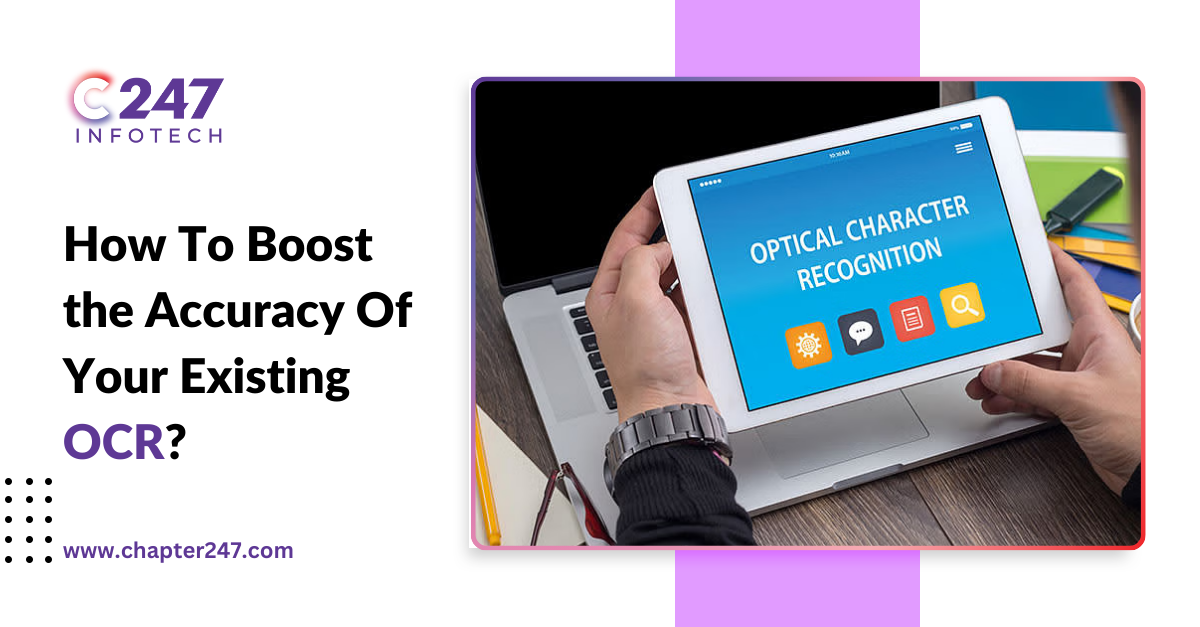Let’s use a delivery service provider as an example to learn OCR quickly. Workers must swiftly take pictures of packages and delivery receipts because they are frequently pressed for time. Their work is fast-paced. Therefore, they can only sometimes guarantee excellent photos. OCR systems need help correctly reading the written text beneath the input image due to the poor image quality, which leads to inaccurate data.
Such errors may make tracking and managing deliveries more difficult, which could result in large financial losses and unhappy customers. The BFSI segment is anticipated to lead the global market; it is projected to develop at a compound annual growth rate (CAGR) of 18% and reach USD 7,985 billion by 2031. However, there are ways to increase OCR accuracy without exerting more work. Now let’s examine them:
What Makes OCR Software Crucial For Companies?
Even while many businesses are working to automate their workflows and go paperless, a lot of business communication still happens via paper documents, PDFs, or scanned data. Important business papers are frequently received on paper as hard copies or as PDF attachments via email. Examples of these documents include contracts, bank statements, POs, receipts, invoices, contracts, government documents, large survey data, static documents, and more.
How Does OCR Software Work?
OCR systems read text from images and transform it into a format that is usable by computers. This translation makes it possible to increase overall productivity, decrease manual mistake rates, and automate data entry operations. OCR software is especially helpful for digitizing a lot of printed content so that it may be edited and accessed digitally. OCR software translates photos to text by going through several complex steps:
- Image Preprocessing: The program enhances the image quality to improve accuracy before the onset of the OCR process starts. This may involve deskeving the image, as well as adjusting the contrast and brightness of the picture, and anything that may seem to impair the image quality.
- Text Detection: The program seeks to find areas in the picture where there is text. This involves extracting text from images or any other object, such as graphics or photos.
- Character Recognition: The OCR accuracy program studies the given textual segments and recognizes the characters with the help of complex algorithms. At this stage, it often employs algorithms for pattern recognition and feature extraction to define the letters, numerals, and symbols accurately.
- Post-Processing: Several procedures are employed by the software to increase the level of accuracy in the recognition of the characters and arrangement of the text in the correct format. Such things as spell check, grammar check, and even layout check could all be incorporated into the process to ensure that the final output is as close to the source as possible.
By 2031, with a CAGR of 16%, the optical character recognition market in Asia-Pacific is projected to be the second largest, valued at USD 9,674 million.
The Role Of OCR Engine Driven By AI?
An AI-powered OCR solution that can correct all the issues that you are facing on its own. Through the use of technology, an AI-driven OCR engine provides a complete solution to attaining good OCR accuracy. It reduces noise, increases brightness, and eliminates blurs. That’s why, enhancing the image quality and ensuring that the input is transparent to facilitate word recognition.
This can be done by utilizing machine learning algorithms to do the following. For instance, it can quickly identify characters in different fonts, styles, and languages. It even perceives the language in which detailed texts such as handwritten notes and tables are composed.
How to Select an OCR Engine for Documentation Needs
A corporation should take into account several aspects while selecting an OCR engine, including:
- Seek for OCR systems that perform well and have high accuracy for a variety of document kinds and image quality.
- Verify that the OCR engine is compatible with the file formats and languages necessary for your company’s requirements.
- Make sure the OCR solution complies with legal and security requirements to safeguard sensitive data.
- To ensure seamless functioning and prompt assistance, take into account the degree of support and maintenance provided by the supplier for better OCR accuracy.
- Select the OCR solution that best fits your needs and can be readily customized and connected with your current systems and workflows.
Boosting OCR Accuracy: Key Measures for Success
To improve OCR accuracy, one has to improve the image quality by image denoising, image contrast enhancement, and image defogging. You can do these by following these steps:
- Employ state-of-the-art character recognition algorithms that employ machine learning to enable better recognition of various fonts, styles, and languages.
- Use post-processing techniques such as spell checks and formatting checks, among others, to enhance the output.
- Choose AI-powered OCR solutions that self-correct noises and blurs and improve with new and different documents.
- Last, but not least, check whether the OCR system has settings to help achieve the best results and whether it can be easily integrated into current processes.
These are measures that, if taken, will ensure that the OCR improves the accuracy of data extraction, leading to better business performance. In a business such as a delivery service where speed of operations is critical, such enhancements can translate to a significant improvement.
Conclusion
Before optimizing anything, you must carefully review the provided documents. Once you are aware of the weaknesses in your documents, you can improve the accuracy of OCR by applying the preprocessing processes mentioned above properly.
To create a preprocessing pipeline that is specific to the documents you wish to process, it is important to understand the various preprocessing procedures. For this reason, you should opt for OCR software and new AI technology. Although each preprocessing step can be adjusted to match the type of documents a user wants to analyze, our default settings cover the majority of instances rather effectively. For businesses in need of a dependable and effective OCR systems engine, Chapter247 is ideal.








